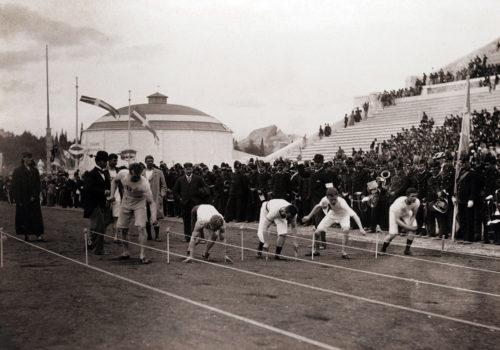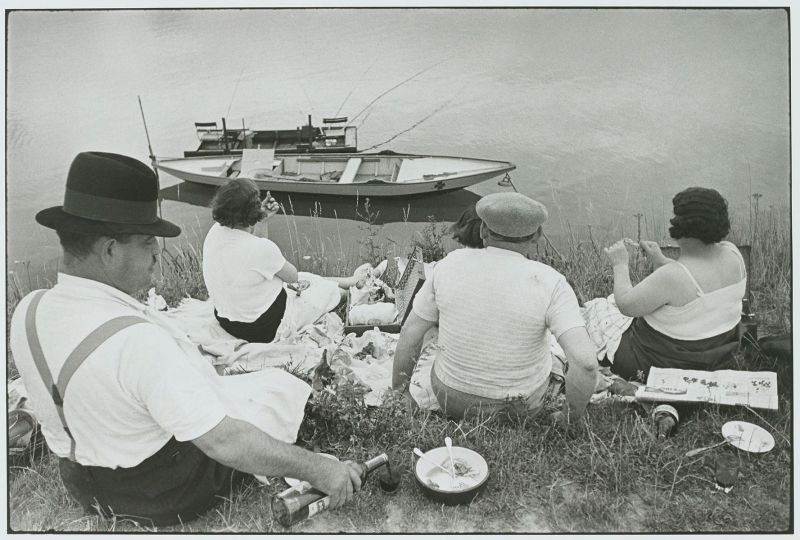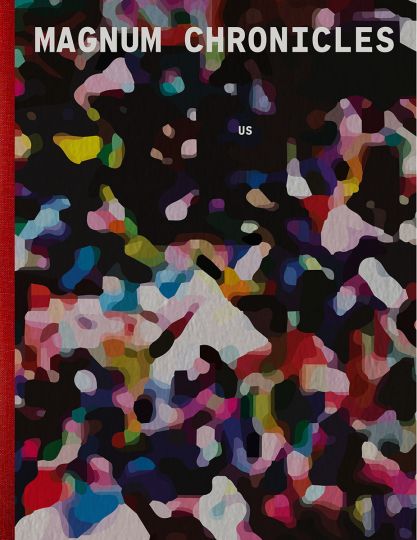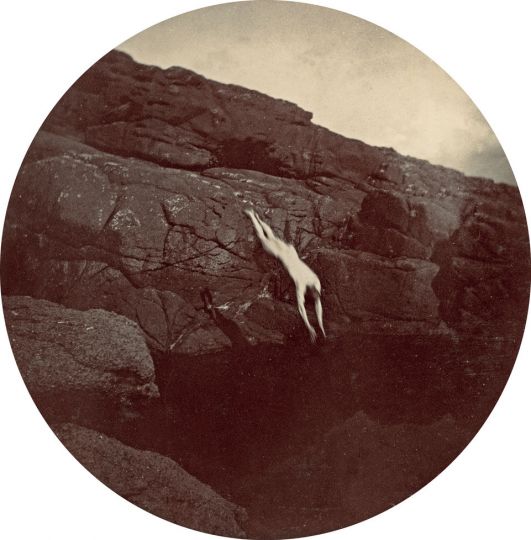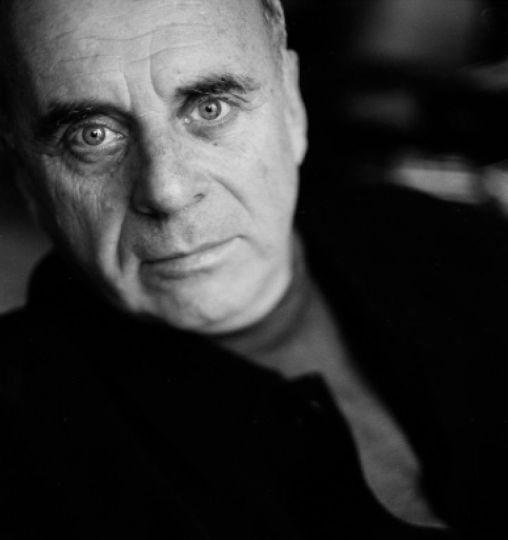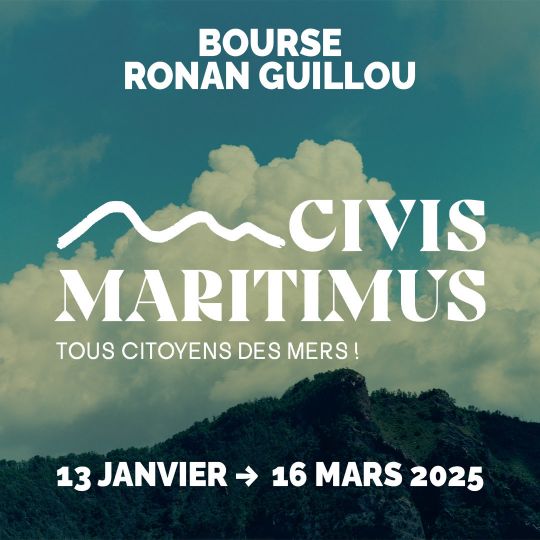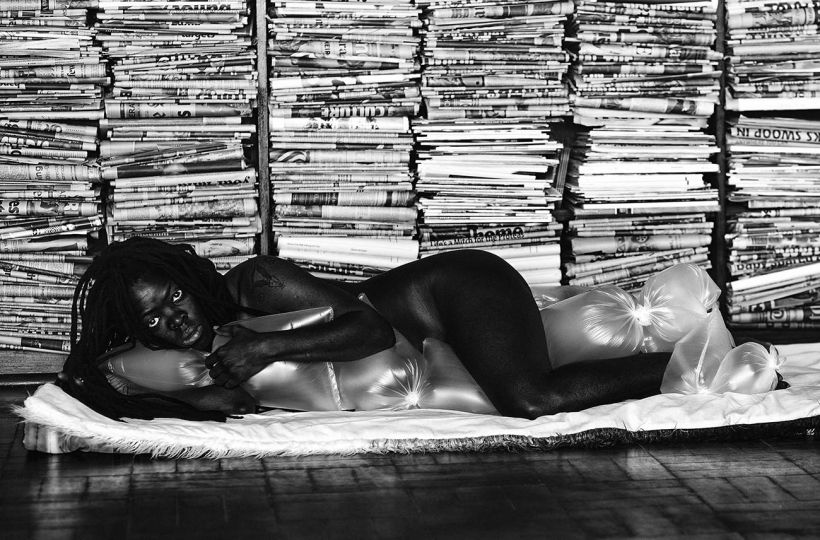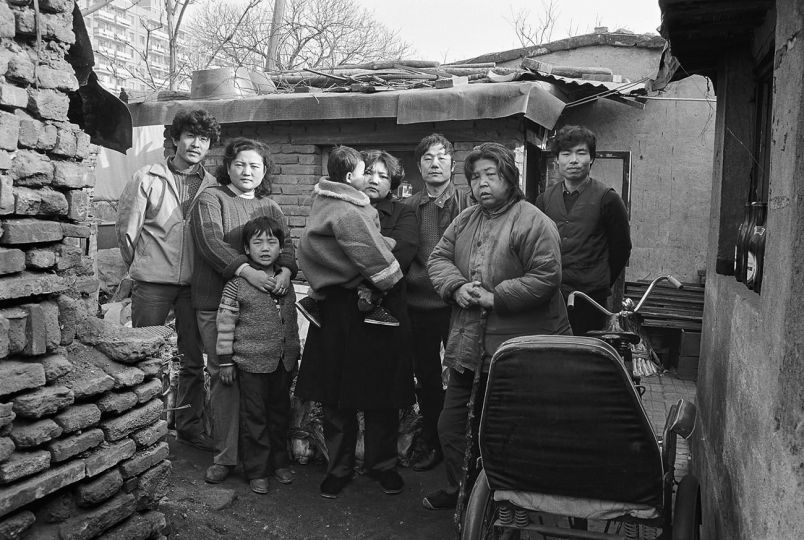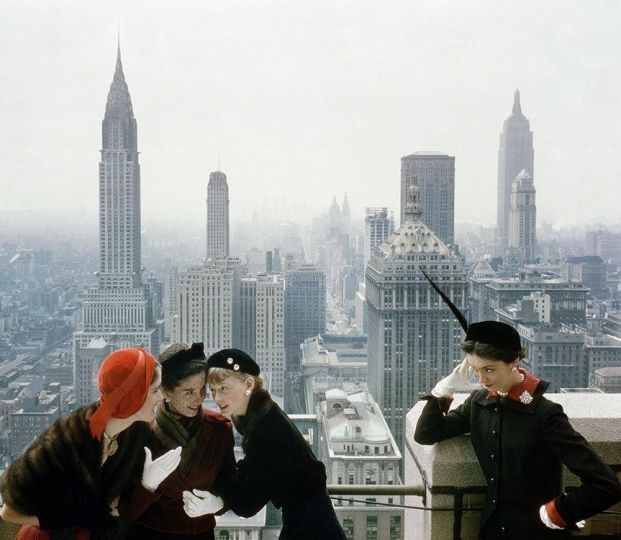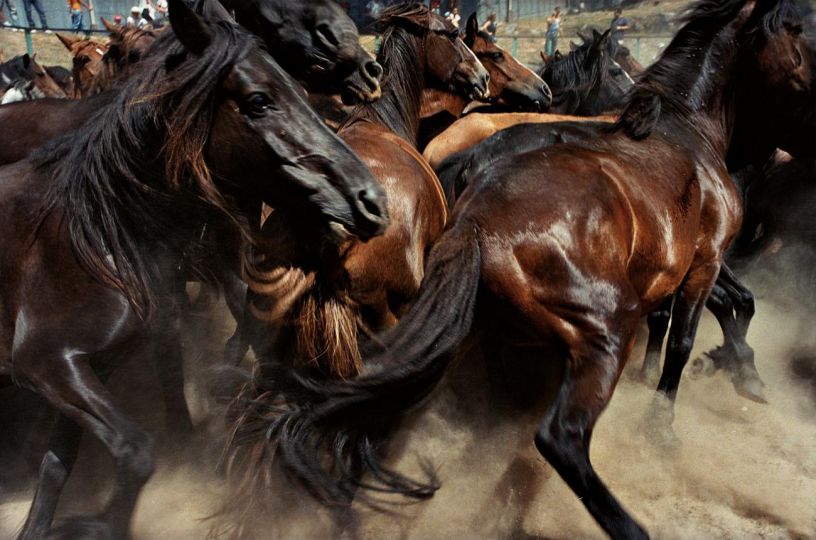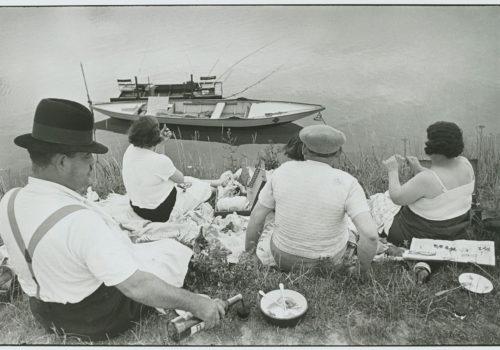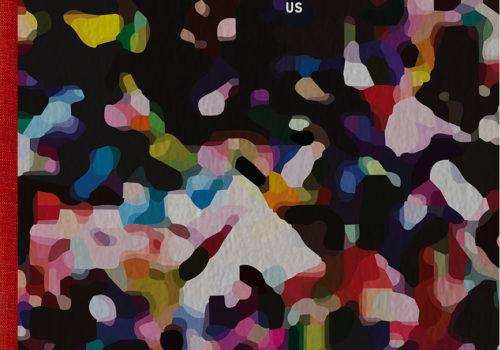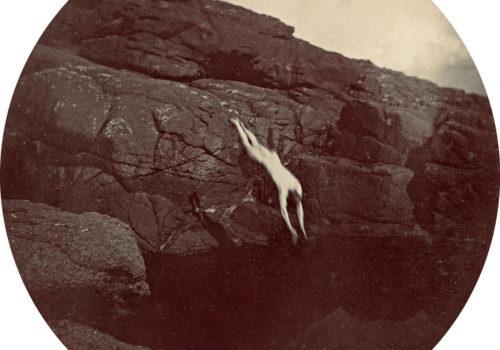A few days before the opening of the Paris 2024 Olympic and Paralympic Games, the inauguration of numerous events around sport are multiplying, revealing the practice of sports photography.
Fabrice Héron, iconographer of the exhibition “Olympisme, une histoire du monde” [link https://www.palais-portedoree.fr/programmation/expositions/olympisme-une-histoire-du- monde] which is held at the Palais de la Porte Dorée in Paris until September 8th, presents the catalog published by La Martinière [link: https://www.editionsdelamartiniere.fr/livres/olympisme-une-histoire-du-monde] of the exhibition and its rich photographic corpus . Sixty specialists brought together under the direction of Pascal Blanchard retrace 130 years of sporting history through images.
A project which brought together nearly 6,000 images of all kinds (drawing, poster, photography) produced between 1896 and 2024, nearly 1,000 of which are published in the book. The opportunity to look back at the evolution of sports photography.
Introduction
Sports photography a world apart? Far from major fairs like Paris Photo, festivals like Visa, long absent from galleries or auctions, sports photography appears as a genre apart. Between technical performance and universal reach, is sports photography condemned to the difficulty of detaching itself from its subject by masking the documentary dimension and the artistic aspect?
From Jacques Henri Lartigue, author of exceptional photographs of tennis and car rallies at the beginning of the century, to Nat Fein awarded the Pulitzer Prize in 1949, from Raymond Depardon, who covered the Tokyo Games in 1964 and those of Moscow in 1980, to Harry Gruyaert, author of ‘a visual series of TV shots of the Munich Games in 1972, through David Burnett co-founder of the ContactPress images agency who navigated from war reporting to the 1984 Los Angeles Games, there is no shortage of big names!
With a diversity of writing and content, sports photography has different functions: social, political, historical, even scientific.
The origins
At the end of the 19th century, sports photography reflected societies that had become more liberal and oriented towards leisure, which left more room for relaxation and sport. It was at this time, in 1894, that Pierre de Coubertin, who campaigned for the introduction of sport in schools, renewed the Olympic Games by creating the International Olympic Committee (IOC).
The Athens Olympic Games in 1896, called the Games of the First Olympiad, took place over nine days of competition during which 241 athletes competed in nine different sports for a total of 122 medals. An international event in the same way as a universal exhibition, amateur photographers and journalists flocked there. The biggest titles (The Times, La Gazzetta dello Sport, Le Vélo) send their reporters, including eight accredited photographers.
The German photographer Albert Meyer accompanied the German delegation with the aim of compiling a photographic album of the first Olympic Games. His photographs were published in the Berlin newspaper Sport im Bild.
We received magnificent series on the opening ceremony at the Panathenaic stadium, of the delegations, and the competitions: discus throwing, fencing at the Zappeion hall, victory of the cyclist Masson, etc. As well as portraits of athletes such as the Hungarian swimmer Alfred Hajos and the Greek marathon runner Loúis Spyrídon.
The exposure time of cameras or the first Kodaks did not allow short exposure times. The athletes seemed ready to go, like at the start of the 100m race or the cycle race. However, they had to wait several long minutes without moving.
In France, Joseph Jules Beau produced a work of astonishing diversity and modernity, the prints of which are today kept at the BNF. Attracted by sport, he specialized in this field, producing numerous portraits of athletes of all categories, with a predilection for cycling and motor racing to the point of being considered today as “the first sports reporter in history “.
Sport, a field of conquest for social values
Accompanying social changes at the beginning of the 20th century, sports photography enjoyed visibility and greater notoriety thanks to the birth of magazines such as L’Auto (ancestor of L’Équipe), La vie au grand air founded in 1898 featuring women like the tennis player Suzanne Lenglen or the swimmer Alice Millat.
In 1931, as the International Colonial Exhibition loomed in Paris, the apogee of French domination over its overseas possessions, a hitherto unknown “Algerian native” by the name of Ahmed Boughera El Ouafi, established himself in 1928. against all odds during the prestigious marathon event at the Amsterdam Games. To everyone’s surprise, he won the gold medal in 2 hours and 32 minutes. A feat that his compatriot Alain Mimoun repeated in 1956 in Melbourne.
Closer to us, at the London 2012 Games, the British Nicola Adams became a pioneer for being the first woman to win an Olympic gold medal in the flyweight boxing category.
Finally, the Tokyo Games were those of visibility for LGBTQ+ athletes, like the German women’s hockey team wearing socks in the colors of the “Rainbow Flag”, of New Zealand weightlifter Laurel Hubbard, assigned boy at birth under the first name of Gavin, or of the Polish rower Katarzyna Zillmann, who after winning the silver medal with her rowing team, took the microphone and thanked her partner. A young generation who also uses the tools at their disposal and therefore social networks to communicate directly from the games enclosure.
Scientific character
From the 1870s, the Frenchman Etienne-Jules Marey (1830-1904), and in his wake the American Eadweard Muybridge (1830-1904), used photographic snapshots using the photographic rifle and “chronophotography”. » to break down the movement of athletes. By freezing the successive poses of their models, the two men could dissociate the details of the sporting gestures.
In Beijing in 2008, for his first Olympic final, Usain Bolt set the world record in the 100m in 9.69, beating his opponents with astonishing ease by releasing his efforts about twenty meters from the finish. He did it again a few days later by winning the 200m, setting a new world record in 19.30, making the sprint a global spectacle.
Political dimension
Sports imagery turns out to be political and the Olympic Games are an opportunity to demonstrate this. the rise of fascism in Italy and Germany that led to the canceling the 1940 games due to world war, could not stop the inevitable victory of the African American runner Jesse Owens winning four gold medals. under the furious eyes of the führer at the Berlin Games in 1936.
In 1968 in Mexico, in the midst of the fight for the recognition of civil rights in the United States, the photograph of the black-gloved raised fists of the American athlete Tommie Smith, and his compatriot John Carlos, on the 200 meter podium became iconic. Very symbolic, this gesture is often associated with the Black Panther Party, although Tommie Smith was never part of it. He claimed to be part of the Olympic Project for Human Rights (OPHR), a group which proposed a boycott of the Olympic Games by African-American athletes as long as their civil rights were not respected. Less well known is the support of Australian athlete Peter Norman, number 2 on the podium, who wore an Olympic Project for Human Rights badge. Jeered by spectators, the athletes were suspended, banned from the Olympic village before being banned from competition for life. This moment was relayed, thanks to sports photography, in all media and the athletes became icons of the fight for equality of the African-American community.
After the Munich massacre in 1972 and the decision of African countries to boycott the Montreal Games in 1976, the presentation of the Olympics was once again obscured by a political controversy. American President Jimmy Carter asked his country’s Olympic Committee not to send athletes to the 1980 Moscow Summer Games in protest against the USSR’s military intervention in Afghanistan.
History Revealer
In 1956 at the Melbourne Games, the water polo teams of the USSR and Hungary clashed in a violent fight less than a month after the Budapest uprising was put down by the Red Army. As a preamble, the Hungarian delegation had cut out the communist symbols from the Hungarian flag flying in the Olympic village. Both teams qualified for the final round. During the match, Soviet player Valentin Prokopov headbutted Hungarian Ervin Zádor who had already scored two goals. The two teams came to blows and several players were injured in the pool, to the point that the water turned blood red. The Australian police had to intervene to prevent the Soviet team from being lynched by spectators. Hungary ended up winning the match 4 goals to 0 and brought back the gold medal by winning their last group match the next day against Yugoslavia.
Another clash that remains in the annals, the basketball final in 1972 in Munich between the American team, undefeated since the introduction of the sport to the Olympic Games in 1936, and its Soviet rival. While the USSR dominated with a score of 49-48, three seconds from the end of the match, the American Doug Collins was offered two free throws which allowed his team to win. The Soviets, arguing with the judges about an ignored timeout between Collin’s two throws, were awarded 3 seconds and then another 3 additional seconds because of a poorly adjusted timer. Six seconds during which they reversed the score took away the victory against the Americans.
Evolution and technology
The Olympic Games are also an opportunity to test new experimental techniques. Some camera manufacturers often lend new cameras and lenses to photographers before they go on sale on the market.
Photographers will seek out original points of view (even without telephoto lenses!) and work on movement thanks to innovations such as flash or reducing the exposure time of cameras. The point of view is where the photographer chooses to position his camera, and it is a crucial element in sports photography. Indeed, it is the point of view that gives the photo all its depth. His point of view also allows him to show unusual perspectives that the viewer could not grasp himself.
A technical revolution occurred from the Barcelona Olympic Games in 1992 when it became possible to obtain views of swimmers taken from the bottom of the pool.
Sports photography is an art that requires great mastery of different techniques due to the dynamism of the subjects and the accessibility to different locations.
A fast shutter speed is ideal for freezing movement while the depth of field captures different types of movement. Photographers equipped themselves with lenses of different focal lengths that are useful for photographing live sports with the help of a zoom lens to get you closer to the action. Finally, the panoramic photo allows to capture a moving object while leaving the surrounding scene blurred to depict the movement.
The digital turning point
Another revolution occurred starting in the 2000s with the arrival of digital photography. Retouched, sports photographs became even more graphically effective visuals, reflecting the emotion of the moment, speed and bright colors. Thanks to technical progress, photographers no longer necessarily needed to be behind their camera to benefit from the most unusual points of view. Devices can today be activated remotely, sometimes simultaneously, they can be attached to drones.
Conclusion
The Olympic Games are as crucial an event for athletes as for photographers who are required to keep up with the frenetic pace of the competitions! In sport there is no voyeurism, you have to be synchronous with the action. The talent of the photographers, their creative abilities but also the technical progress make it possible to reproduce as accurately as possible the fleetingness of the moment and the intensity of the competition.
What artistic dimension can be brought to the photos which immortalize the exploits of high-level athletes? Crossing the finish line or a goal scored are not necessarily the decisive moments remembered by photographers. The best sports photographers seek to transcend by producing aesthetically strong images that go beyond the sporting action.
With the growing popularity of sports culture now permeating fashion and pop culture, sports photography has expanded beyond live photojournalism to include product, editorial and fashion photography for brands, athletes and disciplines.
Sports photographers are increasingly responding to institutional commissions highlighting the athlete through portraits. A more intimate dimension of the athlete, the portrait provides a counterpoint to sports photographs focused on the body and movement, it is also a way for the public to identify with the famous or not famous athletes that they admire. Portraits are sometimes presented through elements that can be collected and kept (stickers, images, posters, etc.).
Fabrice Héron
Iconographer
Collective Les Iconographes
Exhibition
« Olympisme, une histoire du monde »
https://www.palais-portedoree.fr/programmation/expositions/olympisme-une-histoire-du- monde
Catalog
La Martinière
https://www.editionsdelamartiniere.fr/livres/olympisme-une- histoire-du-monde

